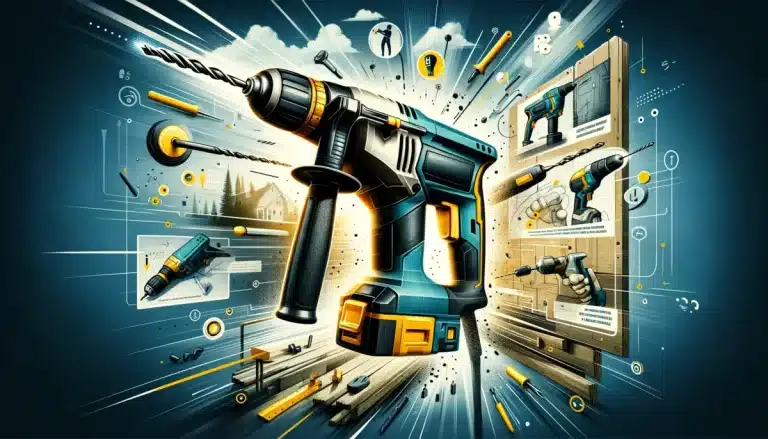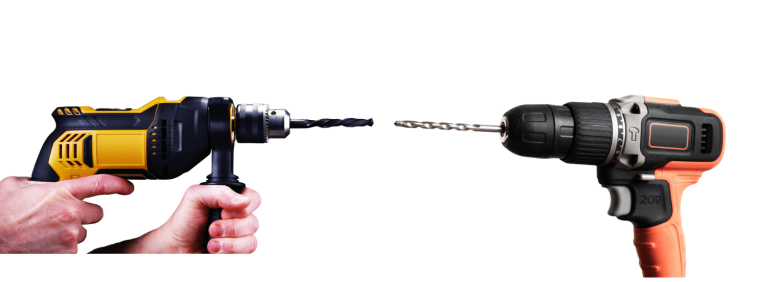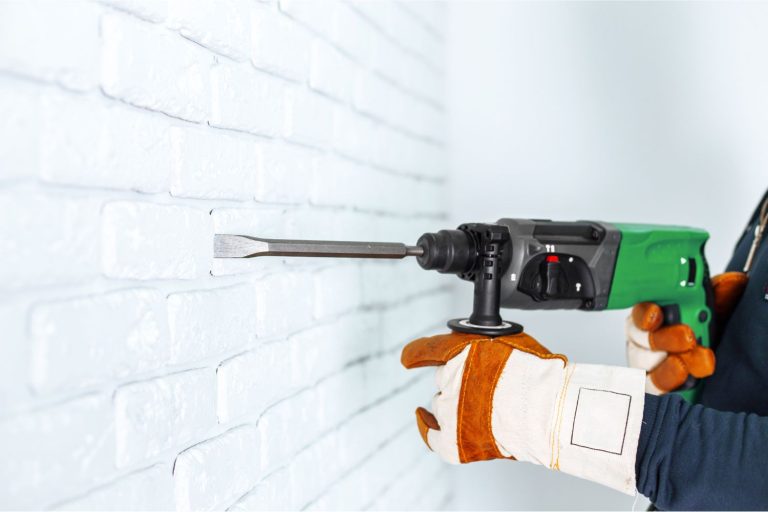How to Drill into Concrete Like a Professional
Concrete is an incredibly strong and durable material, which makes it a popular choice for construction projects. However, when it comes to drilling into concrete, it can be a challenging task if you don’t know what you’re doing. That’s why we’ve put together this helpful guide to show you how to drill into concrete safely and effectively.
Whether you’re hanging shelves, installing lighting fixtures, or performing a more significant construction project, drilling into concrete is often necessary. But before you start, it’s essential to understand the tools you’ll need and the steps required to drill into concrete successfully. By following the tips and techniques we’ll outline in this article, you’ll be able to tackle your project with confidence and ease. So, let’s get started and learn how to drill into concrete!
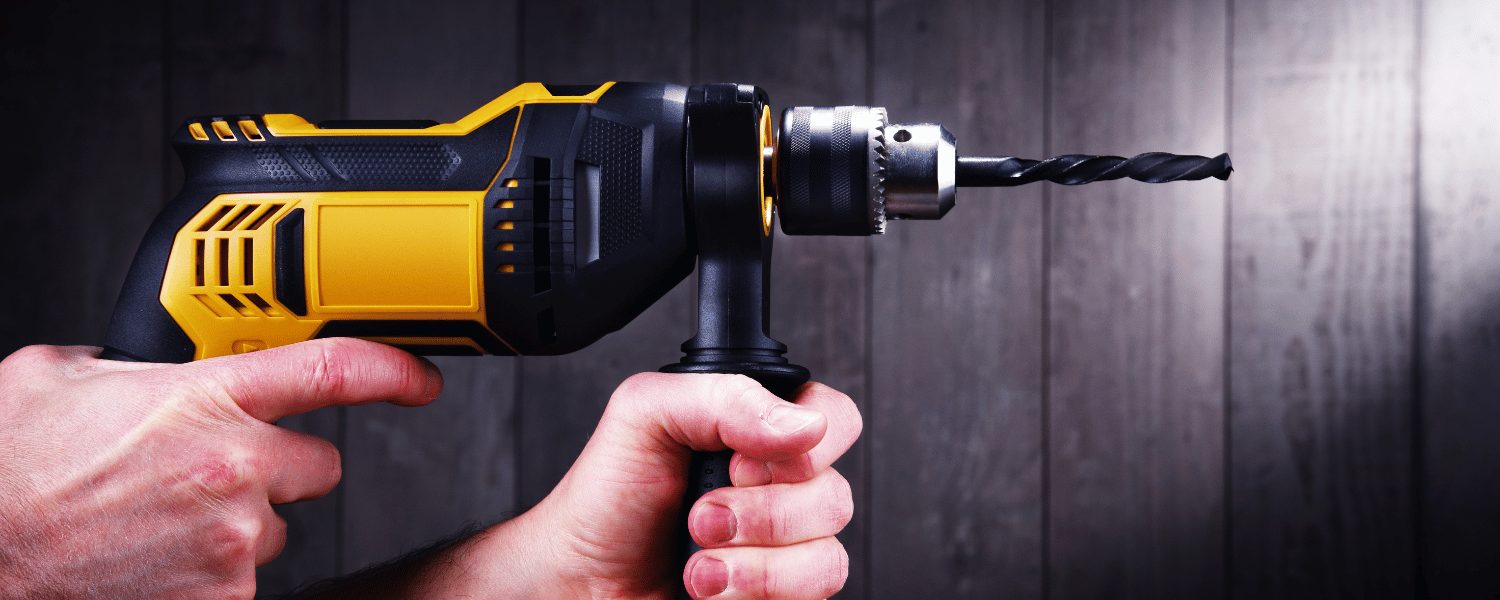
Tools Needed
To drill into concrete, you’ll need specific tools that can handle the strength and density of the material. Here are the right tools for drilling into concrete:
Required tools for drilling into concrete
- Hammer drill: A hammer drill or rotary hammer is designed specifically for drilling concrete and other tough materials. It’s equipped with a powerful motor that provides the force needed to drill into concrete effectively. Rotary hammers can be corded, cordless, or powered by compressed air.
- Masonry drill bits: These are specially designed bits that are made to handle concrete and other masonry materials. They come in various sizes, and you’ll need to choose the right size for your project.
- Depth gauge: This is a feature on your hammer drill that allows you to set the depth of your hole, so you don’t drill too deep or too shallow.
- Concrete screws: A concrete screw is a type of fastener used to secure objects to concrete surfaces. It is designed with threads that allow it to be screwed directly into concrete, without the need for plastic anchors or other materials.
- Concrete Anchors: Concrete anchors come in various shapes and sizes, but they all work by expanding or gripping within the concrete to provide a secure attachment point.
Recommended brands and types of tools
- To get more information on a quality hammer drill for your project, check out our picks of the best hammer drills.
- If you’re looking for cordless convenience, see our picks of the best cordless hammer drills.
- If you need the extra oomph of a corded hammer drill, take a look at our selections of the best corded hammer drills.
- Carbide-tipped drill bits: These bits are more durable and can handle concrete better than standard masonry bits.
Safety gear
- Dust mask: When drilling, you’ll create a lot of concrete dust that can be harmful to your health. A dust mask will protect your lungs from inhaling harmful particles.
- Safety glasses: When drilling, bits can break, and concrete fragments can fly. Protecting your eyes with safety glasses is essential.
- Ear protection: Hammer drills can be noisy, and prolonged exposure to loud noise can damage your hearing. Wearing ear protection is a smart choice to protect your hearing.
By using the proper tools and safety gear, you’ll be able to drill into concrete safely and effectively. In the next section, we’ll go over how to prepare the area before you start drilling.
Preparing the Area
Before you start drilling into concrete, it’s crucial to prepare the area to ensure a successful outcome. Here are some essential steps to follow:
Choosing a location to drill
When selecting a location to drill, make sure it’s a flat and stable surface. You’ll want to avoid any areas with uneven or sloping surfaces that can make drilling difficult. Additionally, you’ll want to check for any pipes or wires that may be behind the concrete surface you’re drilling into.
Removing any obstacles or debris in the area
Remove any obstacles or debris in the area around where you’ll be drilling. This will make it easier to move around and reduce the risk of tripping or falling. If you’re drilling indoors, make sure to cover any furniture or surfaces that may be impacted by dust or debris.
Protecting the surrounding area from dust and debris
Drilling into concrete creates a lot of dust and debris, so it’s essential to protect the surrounding area from the mess. One option is to cover the area with a drop cloth or plastic sheeting to catch the debris. You can also use a vacuum or dust collection system to minimize the amount of dust created.
By following these steps, you’ll create a safe and clean workspace for drilling into concrete. In the next section, we’ll go over how to prepare your drill for the job.
Preparing the Drill
Once you’ve prepared the area, it’s time to get your drill ready for the job. Here are the steps to follow:
Installing the correct drill bit
As we mentioned earlier, you’ll need a masonry drill bit specifically designed for drilling into concrete. These bits are made of hardened steel and are designed to withstand the hard surface of concrete. Make sure the bit is properly installed into the drill chuck and securely tightened before you begin drilling.
Adjusting the depth gauge on the drill
Most hammer drills come equipped with a depth gauge that allows you to set the depth of the hole you’re drilling. Adjust the depth gauge to the desired depth of your hole, ensuring you don’t drill too deep or too shallow. This will help you achieve the correct size and depth of the hole you need.
Choosing the correct drill setting
Hammer drills have different settings, including rotary drill-only, hammer-only, and drill-and-hammer. For drilling into concrete, you’ll want to use the drill-and-hammer setting, as this will provide the most effective drilling power. Adjust the drill’s speed to a medium setting and gradually increase it as you drill.
It’s essential to prepare your drill correctly to ensure you achieve the desired results. By following these steps, you’ll be able to use your drill to effectively drill into concrete. In the next section, we’ll discuss the actual drilling process.

Techniques for Drilling into Concrete
Drilling into concrete requires specific techniques to achieve the desired results. Here are some techniques to follow:
Try a Pilot Hole
Using a smaller concrete drill bit, drill a shallow hole in your chosen location. This will help you line up and start the larger diameter hole in the precise location and limit mistakes.
Starting the hole
To start the hole, place the tip of the drill bit into the pilot hole and begin drilling. Use a slow and steady pressure to penetrate the concrete surface. Be patient and avoid applying too much pressure too quickly, as this can cause the drill bit to break or become damaged.
Maintaining the drill angle
Maintain a consistent angle of the drill as you drill into the concrete. A slight angle can cause the drill bit to bind or break. Keep the drill straight and perpendicular to the surface of the concrete.
Using steady pressure
Use steady pressure as you drill, applying just enough pressure to keep the drill bit moving forward. Avoid forcing the drill, as this can cause the bit to overheat or become damaged. If you’re using a hammer drill, allow the drill to do the work and avoid pushing down too hard.
Cooling the drill bit
Drilling into concrete generates a lot of heat, which can damage the drill bit. To prevent this, periodically stop drilling and spray water on the bit to cool it down. You can also use a commercial coolant spray specifically designed for drilling into concrete.
By following these techniques, you’ll be able to effectively drill into concrete without damaging your drill or the surface you’re drilling into. In the next section, we’ll discuss some additional tips to keep in mind.
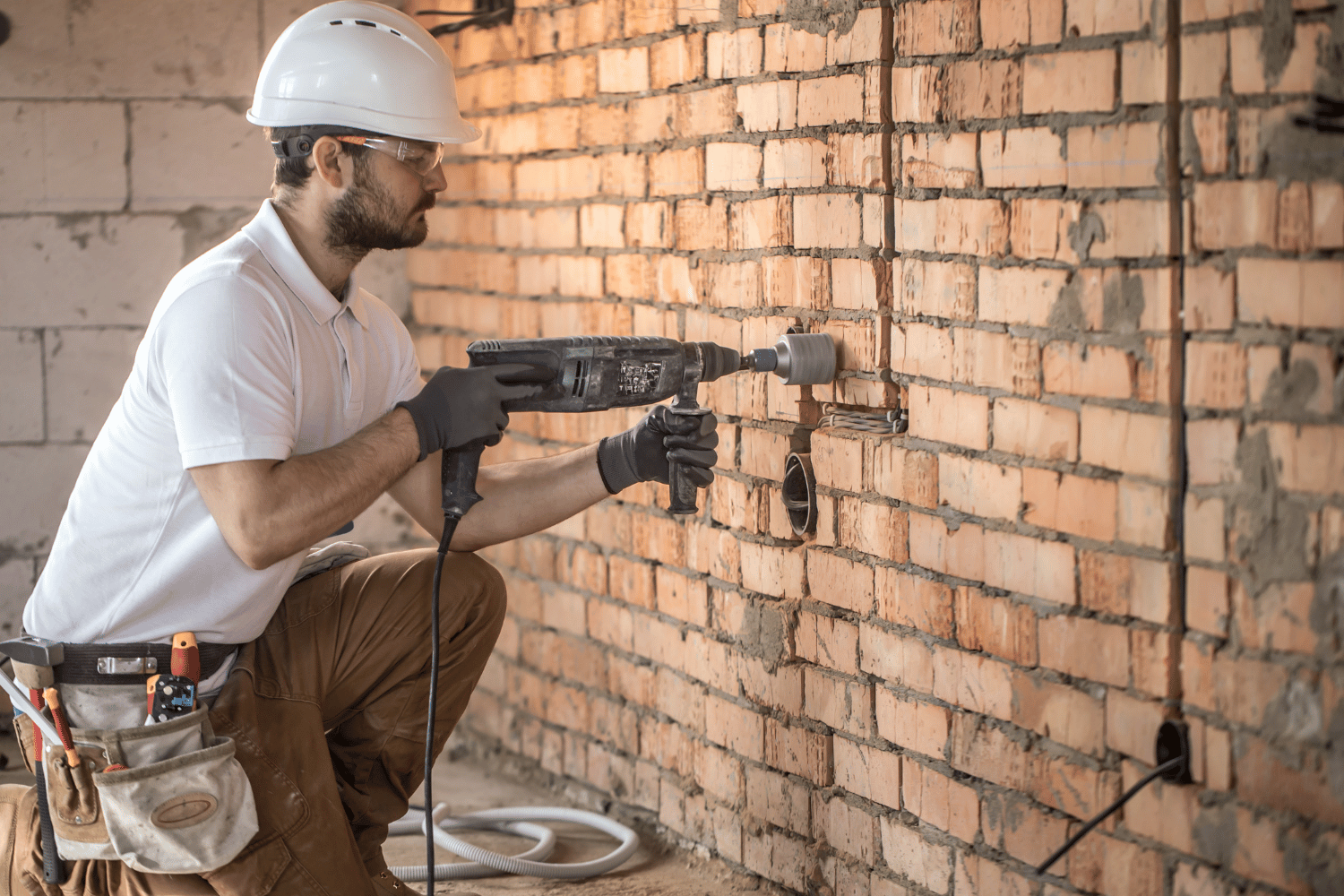
Troubleshooting Common Problems
Drilling into concrete can be a challenging task, and sometimes you may encounter some common problems. Here are some tips to troubleshoot these problems:
Drill bit getting stuck
If the drill bit gets stuck, do not force it, as this can cause it to break or damage the drill. Instead, gently pull the bit out of the hole and remove any debris that may be causing it to bind. You can also try using a hammer to tap the bit lightly to loosen it.
Drill bit breaking
If the drill bit breaks, stop drilling immediately and remove the bit from the hole. Inspect the bit for damage and replace it with a new one if necessary. If you’re drilling a particularly tough piece of concrete, you may need to use a stronger drill bit or take breaks to allow the bit to cool down.
Not being able to drill as deep as desired
If you’re having trouble drilling as deep as desired, it may be due to the type of drill bit you’re using. Check that you’re using a drill bit that’s the correct size and made specifically for drilling into concrete. You can also try adjusting the drill speed or using a hammer drill if you’re not already doing so.
Finishing Up
Once you’ve successfully drilled into the concrete, it’s important to finish up properly to ensure your safety and the longevity of your tools. Here are some tips to keep in mind:
Removing the drill bit
After you’ve finished drilling, turn off the drill and remove the bit from the hole. Be sure to handle the bit with care, as it may still be hot. If the bit is damaged or dull, dispose of it properly and replace it with a new one.
Cleaning up the area
Drilling into concrete can generate a lot of dust and debris, so it’s important to clean up the area once you’re finished. Use a vacuum or broom to remove any dust and debris from the surrounding area. This will help to prevent accidents and protect your lungs from harmful dust particles.
Storing tools properly
After you’ve finished drilling into concrete, it’s important to store your tools properly to protect them from damage and ensure their longevity. Wipe down the tools with a clean cloth to remove any dust or debris, and store them in a dry, cool place. Keep the drill bits organized and labeled for easy access in the future.
Time to Try it for Yourself
Drilling into concrete can seem like a daunting task, but with the right preparation and technique, it can be done safely and effectively. By choosing the correct tools and taking the time to prepare the area, you can avoid common problems like getting the drill bit stuck or breaking it.
Remember to use steady pressure and maintain the drill angle while drilling, and to take breaks to cool the bit down. If you encounter any issues, don’t hesitate to troubleshoot the problem and make adjustments as needed.
When you’ve finished drilling, it’s important to clean up the area and store your tools properly. This will protect your tools and prevent accidents in the future.
By following the tips outlined in this article, you can confidently tackle your next concrete drilling project. With practice, you’ll be able to drill concrete like a pro and complete your projects with ease.


